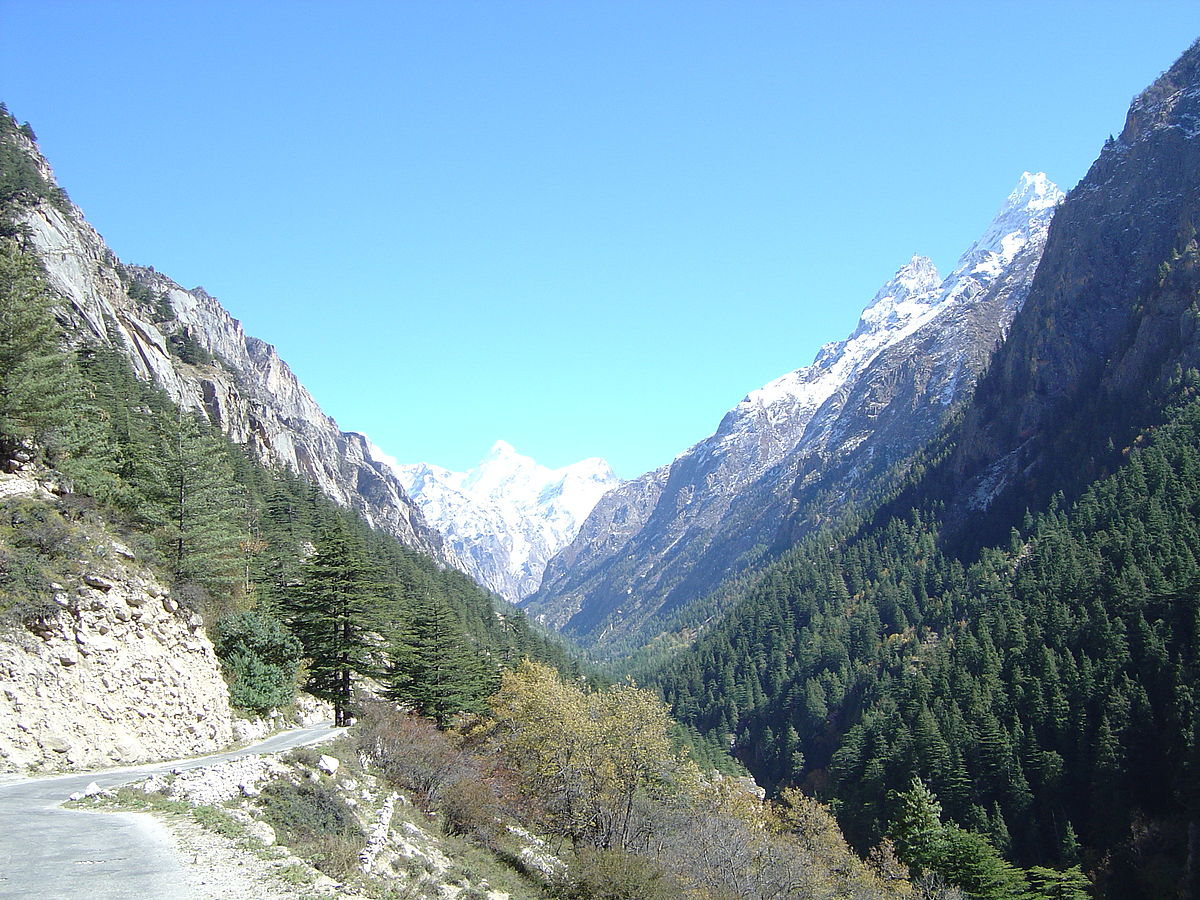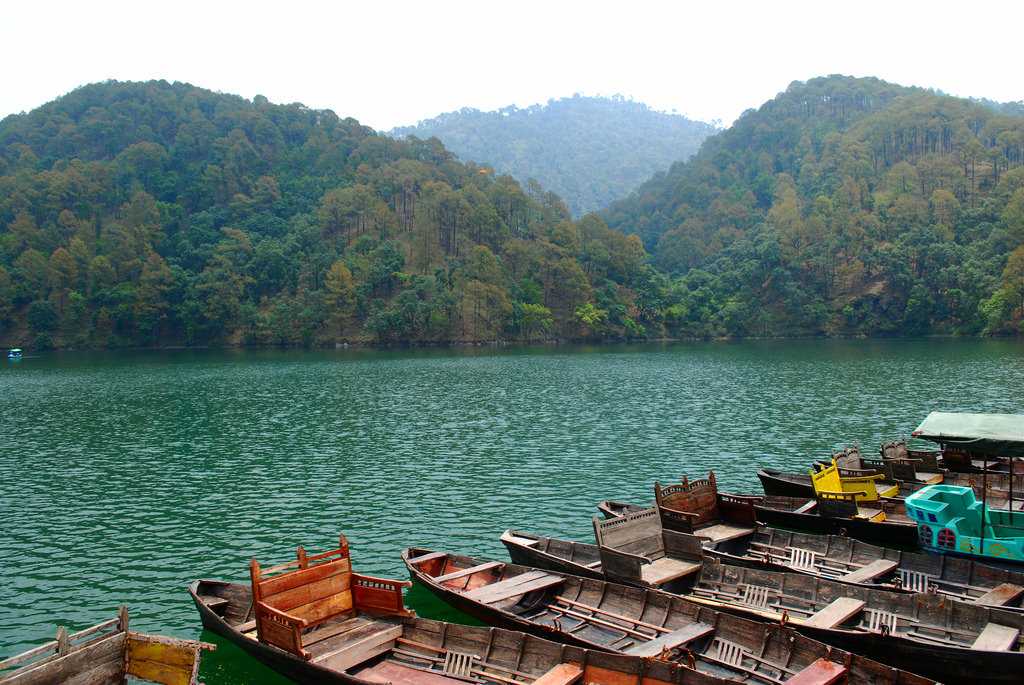
Best Time to Visit Gangotri Dham: Month-by-Month Guide
Destinations
Gangotri Dham is one of the most important pilgrimage sites in India. It is located in the Uttarkashi district of Uttarakhand, in the northern part of the country. People from all over the world come to Gangotri Dham to seek blessings and to connect spiritually. The site is famous for its temple dedicated to Goddess Ganga and for being the origin of the Ganges River, one of the most sacred rivers in India.
One of the most important things to consider when planning your visit to Gangotri Dham is the timing. The weather at this high-altitude region changes drastically throughout the year. Knowing the best time to visit can make a huge difference in your experience. In this guide, we will go through the best time to visit Gangotri month by month, helping you plan your visit for the most comfortable and enjoyable experience.
1. What is Gangotri Dham?
Gangotri Dham is a holy site in the Indian state of Uttarakhand. The Gangotri Temple is dedicated to Goddess Ganga, and it is believed to be the spot where the Ganges River first descended to the Earth. It is part of the Char Dham Yatra, a pilgrimage that also includes Yamunotri, Kedarnath, and Badrinath. For centuries, people have been coming to Gangotri Dham to offer their prayers and seek the blessings of Goddess Ganga.
The area is known for its breathtaking natural beauty. Surrounded by tall mountains and forests, it offers stunning views and peaceful surroundings. Gangotri Dham is also the starting point for the trek to Gaumukh, the glacier that is considered the source of the Ganges River.
2. General Weather at Gangotri Dham
The weather in Gangotri can be extreme, and it changes a lot depending on the time of year. The temperature can drop below freezing during the winter months, while the summer months are usually mild and pleasant. However, the region also experiences heavy rainfall during the monsoon season, making the roads and paths slippery and difficult to navigate.
Here’s an overview of the general weather conditions throughout the year:
Winter (November to February): Freezing temperatures, snow, and very cold conditions.
Summer (April to June): Pleasant and mild weather, with temperatures ranging from 15°C to 25°C.
Monsoon (July to September): Heavy rains, humidity, and the possibility of landslides.
Autumn (October to November): Clear skies and cool weather, making it one of the best times to visit.
3. Month-by-Month Breakdown in Gangotri Dham
January to March (Winter)
Weather Conditions:
During the winter months, Gangotri experiences very cold weather. Temperatures often drop below freezing, and snow is common. The region becomes covered in a thick blanket of snow, making the surroundings look stunning. However, the weather is harsh, and it can be difficult to travel around the area.Best For:
If you enjoy the snow and don’t mind the extreme cold, winter could be an exciting time to visit Gangotri. It’s also a great time for those looking for solitude, as there are fewer tourists during this time. Pilgrims who want to experience the peaceful, snowy environment might enjoy it.Challenges:
The cold temperatures and heavy snow can make it difficult to reach Gangotri. Roads are often closed, and fewer hotels and services are available. The temple is open, but traveling around can be challenging.Tips for Travelers:
If you decide to visit during winter, make sure to pack warm clothing, including thermal wear, gloves, and woolen socks. Always check the road conditions before traveling to avoid getting stuck in snow. The roads may be slippery, so extra caution is needed.
April to June (Pre-Monsoon and Summer)
Weather Conditions:
During the summer months, the weather in Gangotri is much more pleasant. Temperatures typically range from 15°C to 25°C, making it comfortable for pilgrims and travelers. The days are sunny and clear, with cool nights. The natural beauty of the area is at its best, with clear skies and lush greenery all around.Best For:
Summer is considered the best time to visit Gangotri for most people. The weather is perfect for outdoor activities like trekking, photography, and exploring the surroundings. Pilgrims who wish to visit the Gangotri Temple and take part in religious activities will also find this time ideal.Activities:
Visiting the Gangotri Temple to offer prayers.
Trekking to Gaumukh, the source of the Ganges River, which is a popular route for adventure seekers.
Exploring the beautiful landscapes and scenic views around Gangotri.
Tips for Travelers:
While the weather is comfortable, the summer months are also the peak tourist season. It’s advisable to book your accommodations in advance. Wear comfortable clothing and sturdy shoes for the trek, as you will be walking a lot.
July to September (Monsoon)
Weather Conditions:
The monsoon season brings heavy rainfall to Gangotri. The roads can become very slippery, and there is a risk of landslides, which can make traveling dangerous. The temperature remains moderate but is often humid and wet. The heavy rains can also cause waterlogging around the temple, making it less pleasant to visit.Best For:
Monsoon is generally not the best time to visit Gangotri, especially for regular tourists and pilgrims. Due to the bad weather, road access can be blocked, and the temple may be difficult to reach. The lush green surroundings are beautiful but difficult to enjoy because of the rain.Challenges:
The heavy rains and the possibility of landslides can make it unsafe to travel. Hotels and services may also be limited during this time.Tips for Travelers:
If you absolutely must visit during the monsoon, be prepared for wet conditions. Bring waterproof clothing and footwear, and always check the weather forecast before setting out. It’s best to avoid traveling during the peak monsoon months (July and August) unless necessary.
October to December (Post-Monsoon and Winter)
Weather Conditions:
The monsoon season ends in early October, and the weather begins to clear up. The skies are bright and clear, and the temperatures are cool but not too cold. Nights can be chilly, but the daytime weather is comfortable for exploring. The landscapes are lush and green after the monsoon, offering stunning views.Best For:
Autumn (October and November) is one of the best times to visit Gangotri. The weather is perfect for outdoor activities, and it’s less crowded compared to the summer months. This is also an ideal time for pilgrims to visit the temple, as it’s easier to access and the weather is pleasant.Challenges:
As the winter approaches, temperatures begin to drop, and it can get quite cold by December. You will need to prepare for the colder weather as winter sets in.Tips for Travelers:
If you plan to visit in autumn, bring warm clothing for the chilly evenings and mornings. This is the perfect time to take photographs of the breathtaking scenery, so don’t forget your camera. Since the roads are clear, you will be able to enjoy trekking and other outdoor activities without the hassle of rain or snow.
4. Comparing the Seasons for Visiting Gangotri Dham
Here’s a quick comparison of the pros and cons of visiting Gangotri during each season:
Winter (November to February):
Pros: Snow-covered landscapes, peaceful atmosphere, fewer tourists.
Cons: Extremely cold temperatures, limited services, difficult access due to snow.
Summer (April to June):
Pros: Pleasant weather, clear skies, great for trekking and outdoor activities, ideal for pilgrims.
Cons: Peak tourist season, higher prices, more crowded.
Monsoon (July to September):
Pros: Lush greenery, fewer tourists, peaceful environment.
Cons: Heavy rains, roadblocks, landslides, dangerous travel conditions.
Autumn (October to November):
Pros: Clear skies, cool weather, ideal for trekking, and perfect for photography.
Cons: Chilly evenings, starting to get colder as winter approaches.
5. Special Events and Festivals at Gangotri Dham
Gangotri Dham also hosts special religious events and festivals that draw a large number of visitors:
Char Dham Yatra: This is a major pilgrimage that starts in April-May and ends in October-November. During this time, the temple is open, and pilgrims from all over India visit to complete the Char Dham Yatra.
Akshaya Tritiya: This is one of the most important festivals at Gangotri, celebrated with great fervor. It typically falls in April or May.
Ganga Dussehra: This is another important event in the Gangotri region, celebrating the descent of the Ganges. It’s a great time to visit if you want to experience the religious festivities.
6. Tips for Visiting Gangotri Dham
Here are some tips to ensure you have a smooth trip to Gangotri Dham:
Plan Ahead: Whether you are visiting during the busy summer months or the quiet winter months, always plan ahead. Book accommodations in advance, especially if you are traveling during the peak season.
Pack Smart: Bring warm clothing for the winter and cooler clothing for the summer. Waterproof clothing is a must if you visit during the monsoon season.
Stay Safe: Always check the weather forecast and road conditions before setting out. In winter, roads can be slippery, and during the monsoon, landslides are common.
FAQs about Gangotri Dham
What is Gangotri Dham famous for?
Gangotri Dham is famous for its temple dedicated to Goddess Ganga and for being the source of the Ganges River. It is an important pilgrimage site for Hindus.Where is Gangotri Dham located?
Gangotri Dham is located in the Uttarkashi district of Uttarakhand, India, in the foothills of the Himalayas.How to reach Gangotri Dham from Haridwar?
To reach Gangotri Dham from Haridwar, you can take a taxi or bus to Rishikesh, then proceed via Uttarkashi to Gangotri. The journey takes around 10 to 12 hours.What is the best time to visit Gangotri Dham?
The best time to visit Gangotri is during the summer months (April to June) or autumn (October to November). These seasons offer pleasant weather, ideal for trekking and exploring.Why is Gangotri Dham important in Hinduism?
Gangotri Dham is important because it is believed to be the spot where Goddess Ganga descended to Earth. Pilgrims visit the temple to seek blessings from the river goddess.Who can visit Gangotri Dham?
Anyone can visit Gangotri Dham, but it is especially significant for Hindus, who come for religious purposes. It is also popular among trekkers and nature enthusiasts.What are the opening and closing dates of Gangotri Dham?
Gangotri Dham opens in late April or early May and closes in October-November, depending on the weather.How many days are enough for Gangotri Dham?
Typically, 2-3 days are enough to explore Gangotri Dham, including a visit to the temple and nearby trekking spots.Where to stay in Gangotri Dham?
There are several guesthouses and small hotels in Gangotri Dham. You can also stay in nearby towns like Uttarkashi, which offer more accommodation options.How to plan Gangotri Dham yatra?
Plan the yatra by checking the weather, booking your accommodations in advance, and ensuring you have proper clothing and equipment for the journey. It’s advisable to travel with a group or guide for safety.Why is Ganga worshipped at Gangotri Dham?
Ganga is worshipped at Gangotri Dham because it is believed to be the site where the river first descended to Earth, making it sacred for Hindus.How difficult is the Gangotri Dham trek?
The trek to Gangotri Dham is moderately difficult, with steep climbs and coldWhich month is best to visit Gangotri?
It can be according to your prefrence But I think that may is best the month to vist Gangotri Temple.How many days are required to visit Gangotri?
You can visit the dham in 1-2 day.What is the weather like in Gangotri in year round?
As the temple is situated in the mountains. The weather in gangorti is very cold year around.What is the closing date of Gangotri Dham?
Gangotri Dham Closes during the Diwali, or 2-3 days after diwali.





